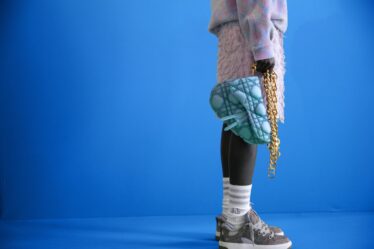
Color-treated hair has different needs than non-color-treated hair. It requires specific shampoos and conditioners, hydrating haircare products, and, of course, more frequent visits to the salon. This is especially true after the age of 50. In our sixth decade, hair becomes more prone to brittleness, breakage, and frizz—and it can be more difficult than ever to keep grays a bay. However, there are a few tricks of the trade to maintain healthy, happy, and fully pigmented strands. Ahead, hair stylists tell us the best ways to care for dyed hair after 50. Keep reading and prepare to shock everyone at the salon—in the best way possible—on your next visit.
READ THIS NEXT: How to Embrace Keeping Your Hair Long After 50.
If there’s one ingredient you should never use on colored hair—no matter your age—it’s sulfates. Sulfates are cleansing agents that are commonly found in shampoos; however, they can strip dyed hair of its color.
“Along with being sulfate-free, women over 50 should make sure their shampoos and conditioners are free of other harsh ingredients,” says Cindy Marcus, a professional hairstylist in Las Vegas and editor-in-chief of Latest Hairstyles. “You should look for products that say all natural or vegan to avoid these ingredients.” She suggests the brands Aveda and Pureology for their color-safe formulations.
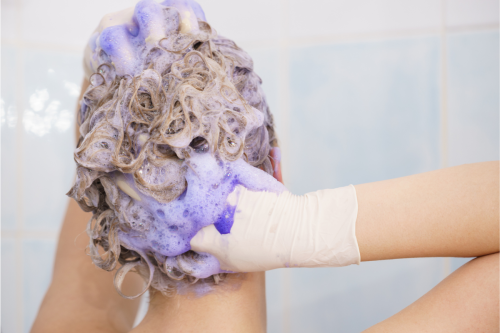
Jamie Mazzei, creative director of NuBest Salon & Spa in Manhasset, New York, says one of the most common questions he receives as a hairstylist and colorist is how to prevent fading and discoloration in dyed hair. When asked, he recommends color-depositing products—specifically, No Fade Fresh Color-Depositing Shampoo and Conditioner.
“No Fade Fresh is a semi-permanent, plant-based, and vegan hair color that will revive dyed hair and can extend the time between colorist appointments in the salon,” he says. “The Metallic Silver and Icy Platinum shades are a great solution to reduce yellow brassiness, which is common in gray hair, and to blend gray hair versus completely covering it,” Mazzei explains. He calls the product her secret weapon for helping clients achieve salon-fresh strands at home.
READ THIS NEXT: If You’re Letting Your Hair Go Gray, Do This First, Experts Say.
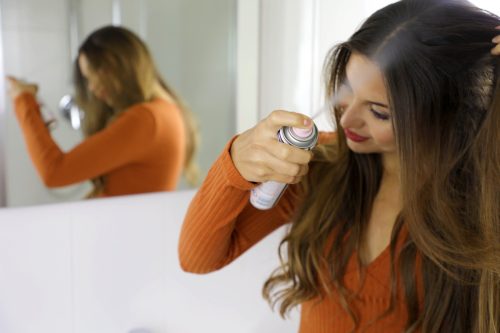
Dry shampoo, to the rescue! “Oftentimes, people in their 50s and beyond don’t need to wash their hair daily—in fact, doing so can reduce moisture in the hair and fade color for people with dyed hair,” says Mazzei. “I’d wash hair two to three times each week max,” he notes. Try styles such as a French twist or chignon on no-wash days if your hair feels too icky to leave down.
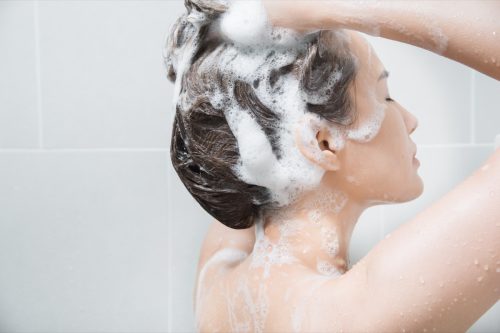
It’s one of life’s simple pleasures to luxuriate in piping hot water in the shower. But if you have dyed hair, it could be doing more harm than good. “While in the shower, you want to limit your exposure to hot water and excessive suds,” says Tatum Neill, creative director of Aveda Arts & Sciences Institutes. “Heat will open the cuticle and will allow more color to spill out of the hair shaft,” Neill adds.
This doesn’t mean you have to set the temperature to ice cold. Instead, try something lukewarm and do your best not to stay in there for hours.
For more beauty advice delivered straight to your inbox, sign up for our daily newsletter.
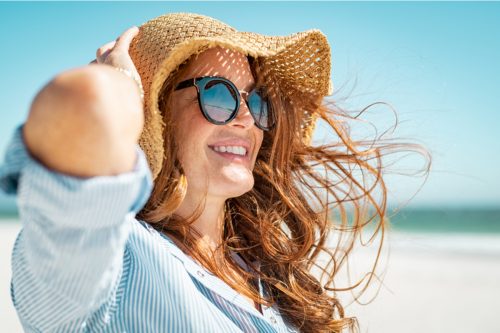
In addition to hot water, dyed hair—especially after the age of 50–can be more susceptible to environmental factors such as the sun and chlorine. For that reason, “wear a hat if you are going to be in the sun for a long period of time [and] if you swim for exercise, get your hair wet in the shower before jumping into the pool,” says Neill. Your strands will soak up the freshwater before your plunge, thus minimizing the number of discoloring minerals your strands absorb.



